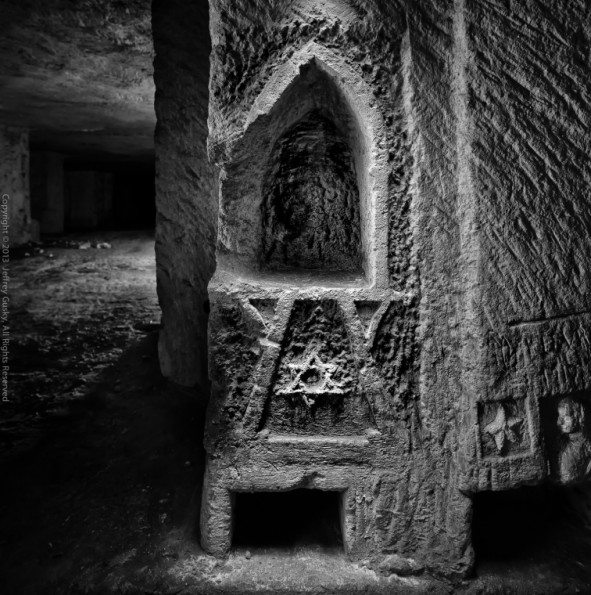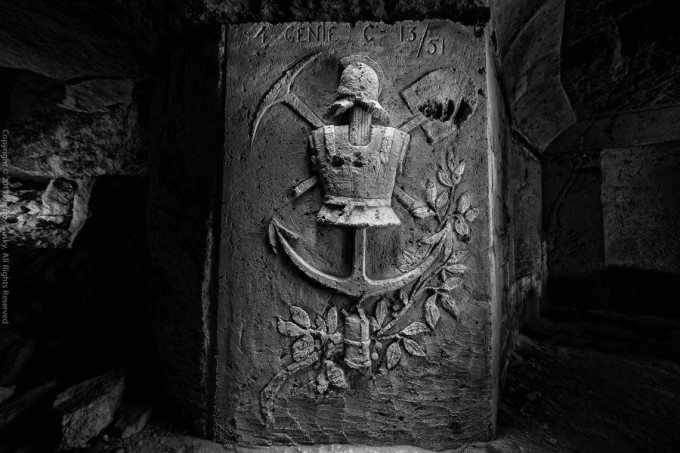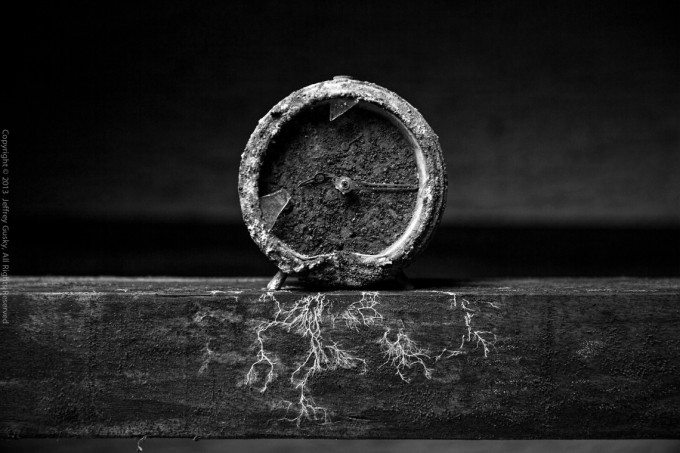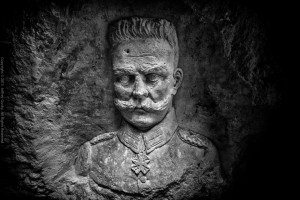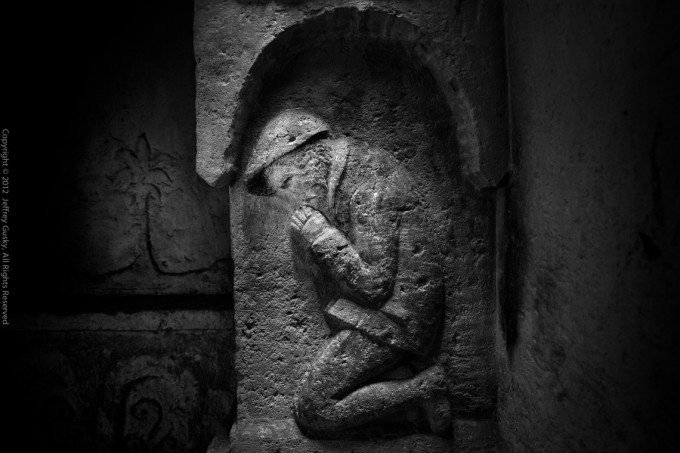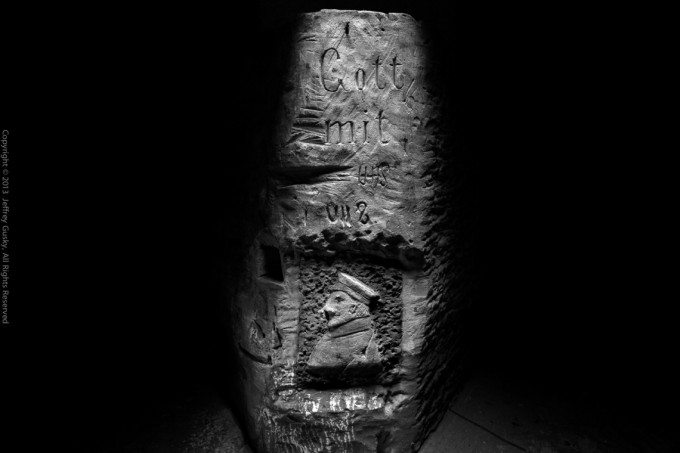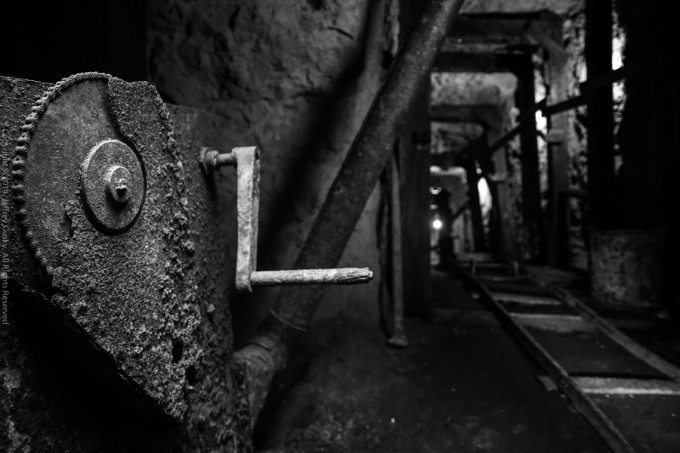All images by Jeff Gusky. Used with permission.
If you stumbled upon a discovery of a lifetime, how would you react? How would you photograph it? That’s what we were curious about with photographer Jeff Gusky, who as we previously reported on discovered underground cities under surface inside the WWI trenches in France. They were intricate and made by various peoples: the French, Americans, Germans, etc.
Photographing these places was a major historical finding of great significance. We had the opportunity to talk to Jeff about the WWI Underground and what it was like to find all the artifacts.
Phoblographer: What was the trek like to the first city? We know that you had to go through some very tough caverns in order to find them to begin with.
Jeff: The first underground city was not as large or elaborate as what I would experience the following day.
The first was reached by walking through a fairly remote farm field, then up a hillside through dense overgrowth, and then over a dirt mound that hides the entrance to this underground city from view. The entryway was wide, with perhaps 9 foot high ceilings. Inside was a virtual art museum on the walls. Deeper in this rock quarry, one could find lots of wire mesh beds used by the soldiers just lying on the ground. There were also cans, shoes, bottles and two large live trench mortar shells leaning against a wall as if 100 years ago was yesterday. On the way down the hill, in the brush, we encountered a live canon shell in the brush that was perhaps 2 1⁄2 feet long and quite wide.
It was here that I photographed a beautiful classical carving of a woman’s face. It could easily be in a museum. It can be seen at jeffgusky.com in the portfolio collection titled French Underground.
Nearby this carving were many others. One was satirical showing a German soldier with his helmet on bent over at the waist. A French Soldier was jabbing his bottom side with a bayonet while his head with helmet in place was buried inside the rear end of a duck.
Phoblographer: You said that you found some love notes and other artwork down there. Can you tell us anything you might know about what it might have been like for the soldier based on the artifacts that you found?
Jeff: Imagine witnessing the first modern mass destruction where the value of human life had all but evaporated…where men were being sent to their death by the tens of thousands in a single day and where the power of the weaponry was so enormous that human beings would not just be killed but their bodies would vanish as they were turned into a wet “pink mist” by the force of the high tech explosives. And the dead bodies of people you knew as living, breathing human being were turned into bare boned skeletons in a matter of days by rats and parasites.
“The entryway was wide, with perhaps 9 foot high ceilings. Inside was a virtual art museum on the walls.”
In these underground cities, soldier on both sides of the conflict could be human. They often carved hearts with the initials of their girlfriends, carved notes with their names, addresses and dates, flags of their countries, expressions of longing for home and funny things to make them laugh.
Phoblographer: When you stumbled upon this discovery, what items would you say were the most important for you to photograph and why?
Jeff: The most important items I photographed were the amazing art and the soldier’s names. These provide us with an intimate human connection that makes 100 years seem like a day. They are an authentic, unfiltered, deeply emotional connection between the inner lives of soldiers a century ago and today.
The most important items I photographed were the amazing art and the soldier’s names. These provide us with an intimate human connection that makes 100 years seem like a day. They are an authentic, unfiltered, deeply emotional connection between the inner lives of soldiers a century ago and today.
Phoblographer: How far deep into the earth were these cities?
Jeff: The depths varied. The second underground city I was privileged to see was accessed by climbing down a series of ladders approximately 30 feet. Once you were underground, I could stand up and I’m nearly 6’4” tall.
Phoblographer: Talk to us about the theatres that you found?
Jeff: I found two theaters but I’m sure there were more. Both were quite large in terms of seating capacity. One was German, the other French.
The stage of the French theatre is carved out of stone. The stage is elevated two or three feet above the seating area for the audience. It’s part of an underground hospital complex. A large bomb struck hit the surface of the earth overlying the entrance to the complex and the roof of the underground city collapsed. Daylight now streams into the space where the roof once was. A photograph of this can be seen at jeffgusky.com in the portfolio section titled French Underground.
Phoblographer: Tell us about the gear that you used to photograph all of the artifacts. You were working for six months on this, and it must have been incredibly tough to capture exposures in complete darkness.
Jeff: I use a Canon 1 DX, Zeiss and Canon “L” lenses (mostly primes), up to 9 Canon radio-controlled speed lights and an array of light modifiers. Tripod is a Really Right Stuff carbon fiber model with an Arca Swiss Cube in place of a ballhead. A SmallHD DP6 monitor is attached to my tripod and produces high resolution black-and-white renders of each photograph taken. My workflow is such that I never see a color image. It was like carrying a portrait studio underground. I also do underground panoramas using Really Right Stuff panoramic adapters. I learned by trial-and-error how to photograph in complete darkness. At times the spaces are cramped and can be quite dangerous to work in. They are often challenging to enter, but once inside most of the underground cities they are spacious and sometimes vast.


